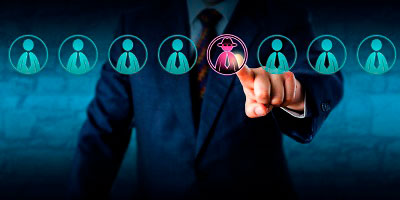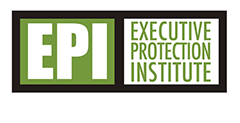As a former Emergency Medical Technician and Rescue Diver, I have seen first aid and trauma kits of varying sizes, shapes and colors that included enough equipment to operate a MASH unit at the site of a catastrophe for a month. On the other hand, the most experienced flight nurse/combat medic I’ve ever known once said that if he had a 2X2 bandage and a pair of rubber gloves, he was “good to go” for almost any occasion. This illustrates that it is the carpenter and not the tools that usually gets the job done, and thus it is clear that competent, recurrent training becomes an essential component in the protection specialist’s toolbox.
Continue reading “Second Aid; Preparing for Medical Emergencies”Tag: executive protection institute
Digital Citizenship

We have officially reached a point in history where we have an entire generation of people who have grown up using digital media. From their first moments of life, they have been introduced to technology, that provides them access and connectivity to the entire world. We see little ones in strollers playing with cell phones and iPad’s before they can even walk and talk. This new generation is already consuming and creating content at astronomical rates. However, it is important to note, and studies have shown that digital media consumption is addicting, both physically and psychologically. Participating in social media produces the same neurological response as using an addictive substance. Specifically, when a person receives a notification that a post has received attention, such as a ‘like’ or a ‘mention’, the brain naturally receives a rush of dopamine causing the person pleasure and a sense of satisfaction. This exact same response can be compared to individuals using addictive drugs (Hilliard, 2019).
Continue reading “Digital Citizenship”Key Considerations When Building Out Your Insider Risk Program

Is Insider Risk something new, or something we need to look at in a new way? Traditionally we have put in place measures to protect the perimeter, to control access into our buildings or our systems. Why did we do this? We saw the biggest risks and threats coming from external sources. In a “less connected” world this made perfect sense. We housed our assets and managed accordingly. However, the world has changed. We are more inter-connected than ever, and in many ways, we’ve optimized against the external threats. We have become experts in “perimeter” protection. We cannot rest and let down on the perimeter, however, the perimeter being the primary focus has left us vulnerable in many ways. This paper discusses how we design our internal controls, both in physical and system realms, as we evolve our understanding on where risks really exist, and how we believe people might behave. Employees stealing physical or confidential information from their company and/or place of work is not new, however, the complexity of the environment that we protect is no longer simple, and the stakes are high. Our reputation, our credibility, and in some cases the financial viability of these organizations are at stake.
The Balancing Act Between Soft and Hard Skills:
 What Every Executive Protection Pro Needs to Know
What Every Executive Protection Pro Needs to Know
Security is a legitimate concern for politicians, celebrities and high-profile executives. These days, many turn to executive protection professionals to navigate threats and keep them out of harm’s way.
These protection agents come from diverse backgrounds; some have law enforcement or military experience, others do not.
Which should you consider when hiring? That depends on your preferences and beliefs. Clients may view those with military or law enforcement experience as overly aggressive, opting instead for a candidate who they assume will adopt a softer approach to their safety.
When it comes to personal protection, the best approach often includes a mix of the soft and hard, regardless of background. But it can be a delicate balancing act.
Practicing the art of avoidance
Let’s review hard and soft skills to better understand the need for balance.
Some hard skills are obvious. Professional protectors must be physically able to protect the client and have the necessary training regarding firearms and defense to keep the client safe against immediate threats.
But they are more than just muscle. Protectors do everything in their power to avoid problems by conducting risk assessments and taking precautions or countermeasures to mitigate or limit exposure to especially harmful situations. We call this the “art of avoidance.”
For example, executive protection professionals routinely scout locations in advance to define optimal arrival and departure points and employ route analysis to minimize risks for vehicle and foot traffic. Preparation and planning trump brute force, which is often viewed and used as a last resort.
Another benefit to planning? The protector’s preparations can often maximize time for the benefit of the executive. Time for all of us is a valuable commodity, especially for those who require protection.
The priority, then, is to create a productive environment for the client to live and work safely, with a much-reduced need for the application of force. Strive to establish a clearly defined protection program focused on avoiding problems before they become problems. Doing this can even reduce liability.
Risk assessment, advance work, intelligence activities, surveillance detection, and physical security processes are just a few disciplines that may be defined as soft skills. Qualified protection specialists are familiar with all of these, plus many more.
Don’t overlook the obvious
There are other traits that are often overlooked but equally important. These so-called social skills include the ability to communicate effectively in both oral and written formats, and its importance should not be discounted. To know the audience and to communicate appropriately is essential. In many circumstances, a soft and pleasant tone as opposed to a gruff and authoritarian manner is the most effective means of communication.
The actions of the professional can affect the success of the protector/client relationship as well. Professional protectors work best when they are seen when needed, and not seen when they are not. The protector should strive to blend in around the client, drawing attention away from themselves, the executive and the environment.
It’s no secret why the best protectors are compensated the most. The operations they manage are seamless; the details they oversee run smoothly. Not only do they perform the tasks at hand, but they go the extra mile: Cars are always there, luggage is always picked up on time, the elevator is always waiting, planes are always prepped, and drivers always know where they are going. These too, reduce risk, but also add value, as the client sees these preparations as ways to save time and money.
Follow the Scout Credo
Lastly there are certain recommended soft skill traits I like to refer to as the “Scout Law”: be trustworthy, loyal, helpful, friendly, courteous, kind, obedient, cheerful, thrifty, brave, clean, and reverent. Each of these traits apply in the protective mission of protectors. Each has a value clearly applicable for protectors.
Protection agents are more than just guards or sets of eyes. These trained professionals require a broad-based skill set in order to be effective. Striking the right balance between soft and hard skills is the necessary first step to a successful protector/client relationship.
Jerry Heying, CPP, PPS, CST
CEO
International Protection Group
International Protective Service Agency
Executive Protection Institute

